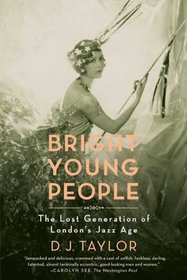Search -
Bright Young People: The Lost Generation of London's Jazz Age
Bright Young People The Lost Generation of London's Jazz Age
Author:
The modern obsession with celebrity began with the Bright Young People, a voraciously pleasure-seeking band of bohemian party-givers and blue-blooded socialites who romped through the gossip columns of 1920s London. Drawing on the virtuosic and often wrenching writings of the Bright Young People themselves, the biographer and novelist D. J. Tayl... more »
Author:
The modern obsession with celebrity began with the Bright Young People, a voraciously pleasure-seeking band of bohemian party-givers and blue-blooded socialites who romped through the gossip columns of 1920s London. Drawing on the virtuosic and often wrenching writings of the Bright Young People themselves, the biographer and novelist D. J. Tayl... more »
ISBN-13: 9780374532116
ISBN-10: 0374532117
Publication Date: 1/5/2010
Pages: 384
Edition: 1
Rating: ?
ISBN-10: 0374532117
Publication Date: 1/5/2010
Pages: 384
Edition: 1
Rating: ?
0 stars, based on 0 rating
Publisher: Farrar, Straus and Giroux
Book Type: Paperback
Other Versions: Hardcover
Members Wishing: 2
Reviews: Amazon | Write a Review
Book Type: Paperback
Other Versions: Hardcover
Members Wishing: 2
Reviews: Amazon | Write a Review
Genres:
- History >> Europe >> England >> General
- History >> Europe >> England >> 20th Century
- History >> Historical Study & Educational Resources >> Social History
- History >> World >> General
- Nonfiction >> Social Sciences >> Sociology >> General




